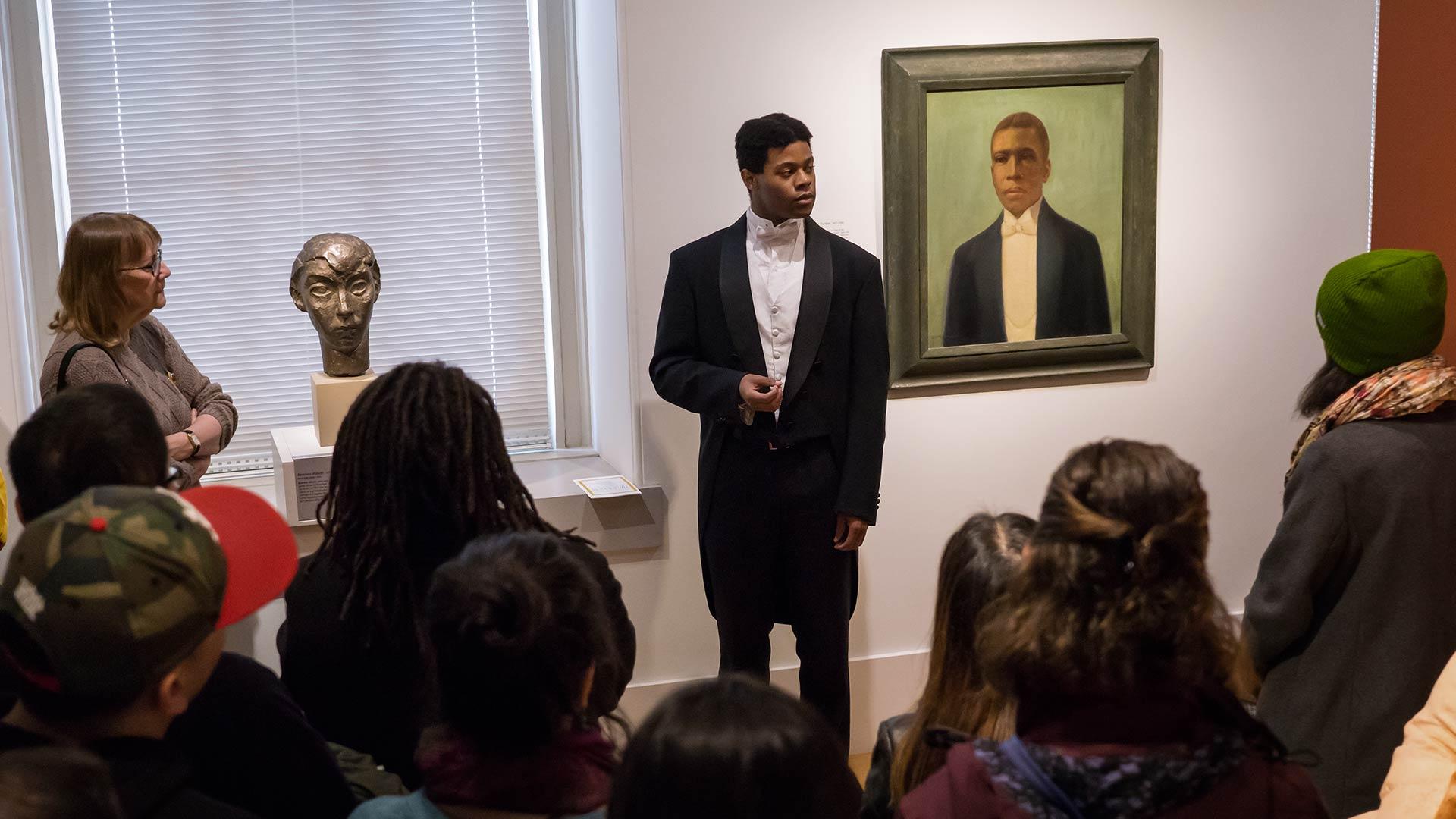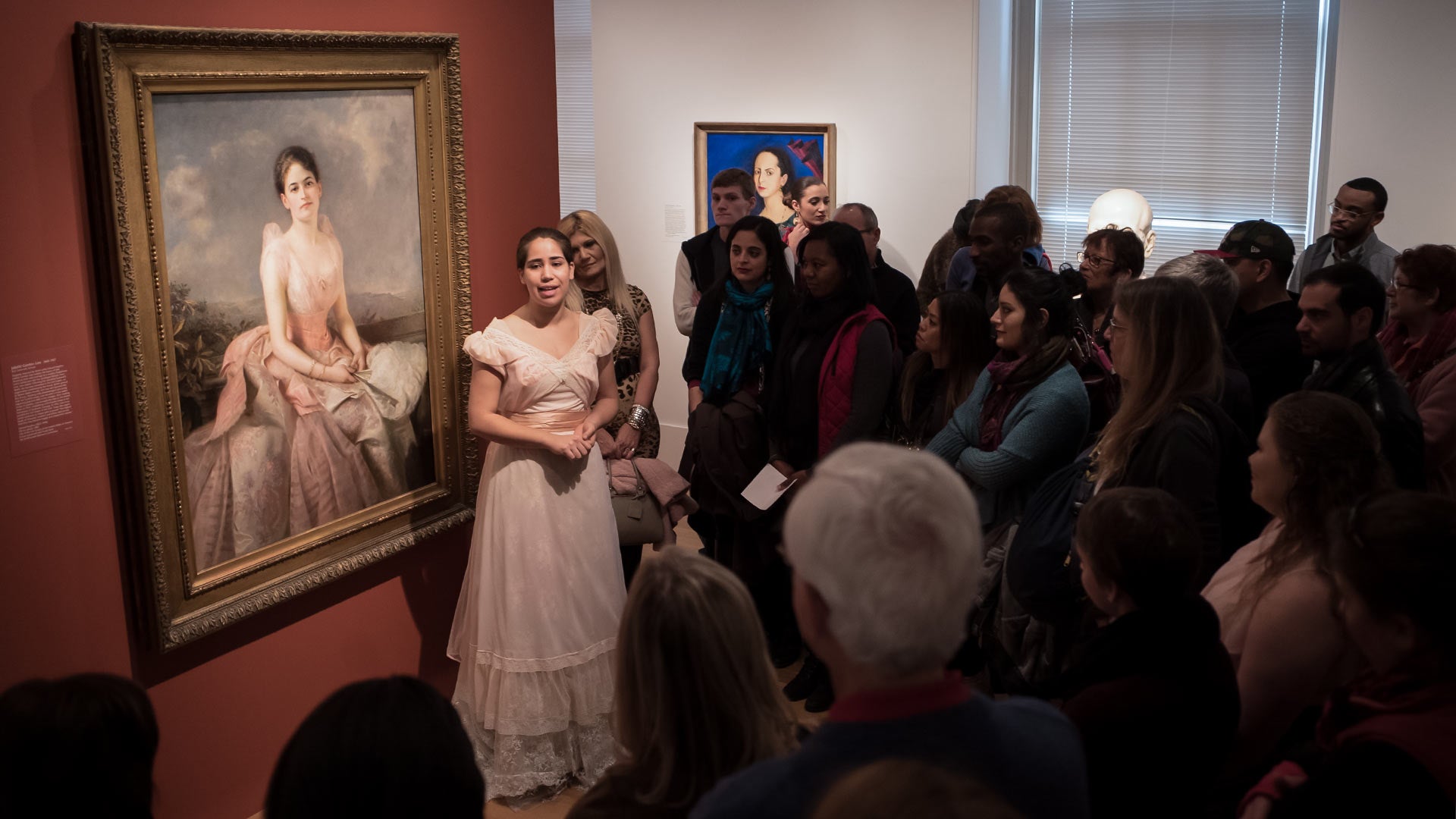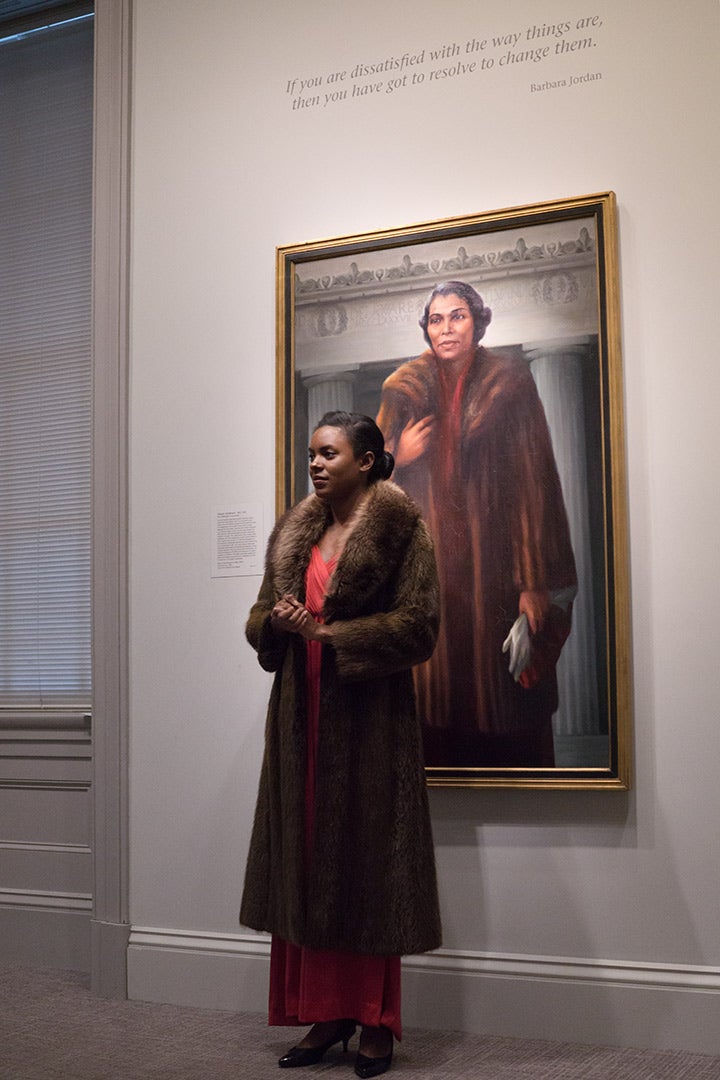
(Photos by Geoff Sheil)
hough born a century apart, singer Marian Anderson and 18th-century feminist Frances Wright are strolling through the halls of the National Portrait Gallery when suddenly they come across a series of photographs of Anderson. “Marian, this is all you!” cries Wright in her English lilt. Soon, the pair are discussing Anderson’s European travels and Wright’s birthplace across the pond.

Theirs are just two of the portraits coming to life this weekend during “The Measure of Our Lives,” a partnership between theatre Associate Professor Leslie Felbain’s class in character development and the Smithsonian Institution gallery in Washington, D.C. Eleven students will lead an audience through the museum while embodying and delivering monologues as a range of figures represented on the walls, from 18th- and 19th-century writer Charlotte Perkins Gilman to artist and AIDS activist David Wojnarowicz.
With a background in street theater, performance installations and museum work, Felbain worked with the gallery’s docent and intern programs manager, Geri Provost-Lyons, and director of audience engagement, Rebecca Kasemeyer, to forge the partnership. Now in its 11th year, the performances are “a way for them to have a different kind of tour that has more animation while supporting the gallery's commitment to community engagement,” Felbain said at yesterday’s rehearsal.
At the beginning of the semester, each student chooses a portrait that resonates with them. The only requirements are that the subject is no longer living and isn’t too iconic—both stipulations that help to avoid comparisons between the student’s performance and the real-life persona. (Sorry, Oprah.) The students investigate the figure’s life and write a monologue that simultaneously informs and entertains.

“I had never heard of her before,” Edima Essien ’21 said of Mary McLeod Bethune, the activist who pushed for wider education for black children, but now she knows more about Bethune’s “wanting to make sure that black women got treated the same as everyone else throughout the education system and how that affects me as a young adult today.” (Essien, not quite the senior citizen that Bethune was when her portrait was painted, will be adding gray to her hair for the event.)
The students were instructed to remain in character for the duration of yesterday’s rehearsal; one lamented that he still needed goggles for his costume, and Wright (played by Ebie Prideaux ’21) chimed in in her English accent that she had a pair she could bring. As the living portraits passed a copy of Gilman’s famous short story, “The Yellow Wallpaper,” Lauren Alberg '21 called out in a refined tone, “I did that!”
Felbain hopes students will learn the centrality of research while still looking to the art for guidance. “If you keep staring at your portraits, you will become them.”